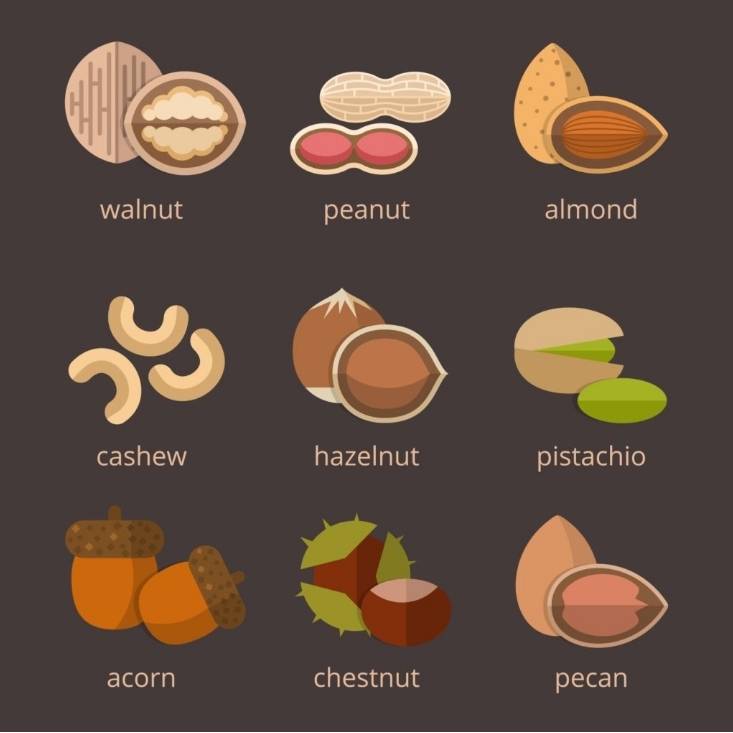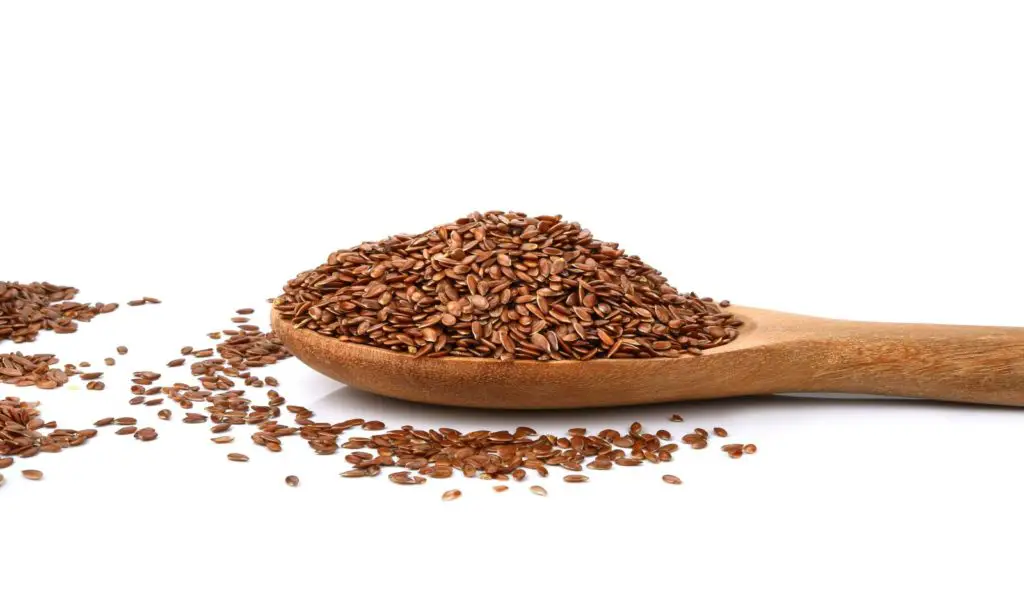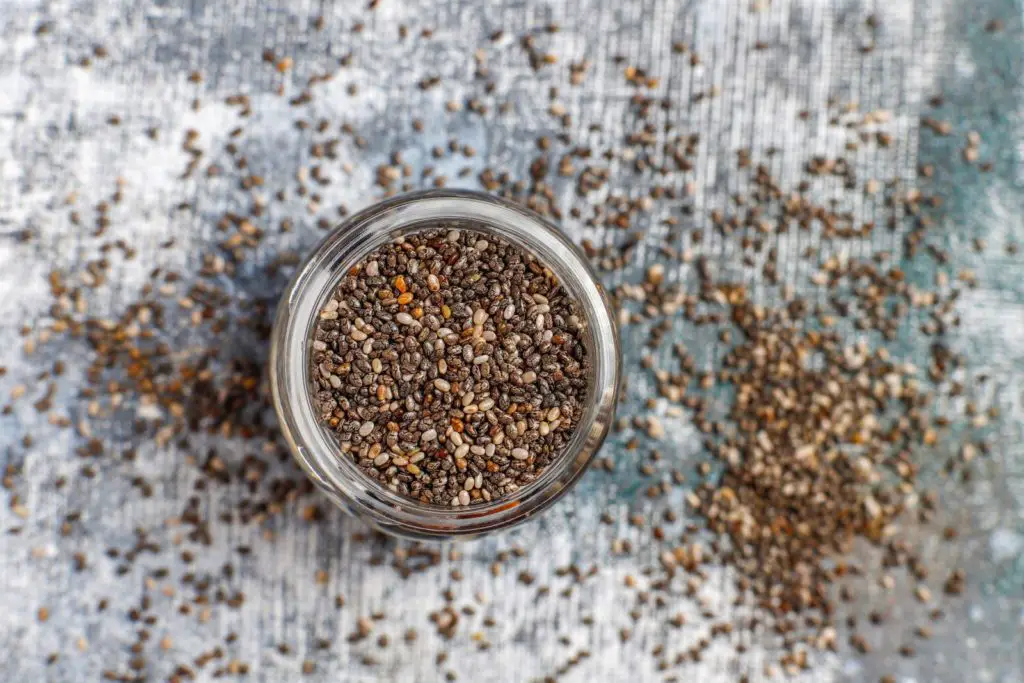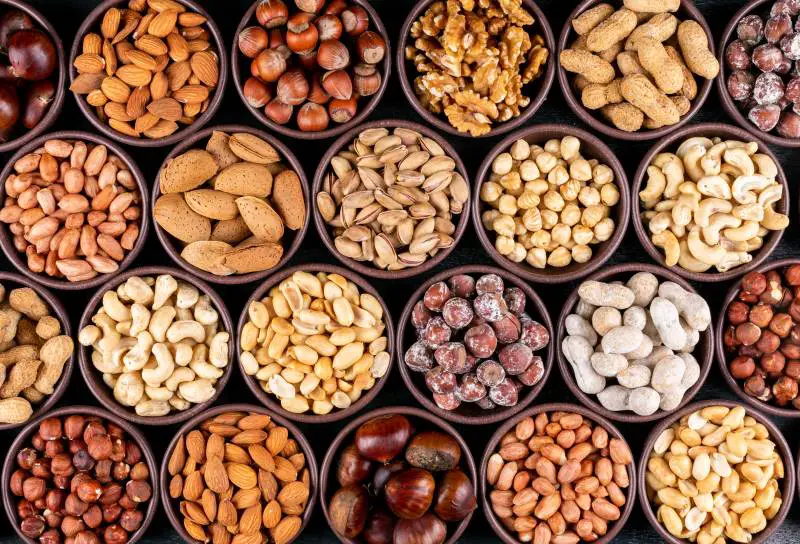When you’re looking for a snack, what are your best options if you have histamine intolerance? Hopefully, you don’t reach for a bag of chips! They’re low in nutritional value and hard on your blood sugar.
But what about nuts and seeds – are there low histamine nuts and seeds that won’t worsen your histamine sensitivity symptoms? It depends on the type of nut or seed. Let’s take a closer look at which are a healthier snack option if you have histamine intolerance.
Also, discover other quick and easy low-histamine snacks.
Nuts and Seeds are Nutrient Dense
Nuts and seeds are among the most nutrient-dense foods. Plus, they contain heart-healthy fats. In fact, studies show that munching on tree nuts, even peanuts (a legume), may lower the risk of cardiovascular disease and type 2 diabetes.
Here’s another perk! A study published in New England Journal of Medicine showed that people who snacked on nuts daily had a 20% lower death rate. (3) That’s reassuring, right?
Why are nuts such a heart-healthy choice? Research shows they reduce markers of inflammation. (4) That matters because low-grade inflammation damages the inner walls of arteries. When arterial walls are damaged by the fires of inflammation, it increases the risk of plaque forming and blood clot forming.
Low Histamine Nuts and Seeds
Snacking on seeds and nuts, especially as an alternative to chips, sounds like a healthy option. But some nuts and seeds are a better choice than others if you have histamine intolerance. Let’s look at some of the most common nuts and seeds and whether they’re a healthy snack if you have histamine sensitivity.

Peanuts
Not a true tree nut, peanuts are a legume. Still, many people often refer to them as nuts and enjoy munching on them.
Peanuts contain more protein than tree nuts but they’re also one of the most common foods people are allergic to. So, peanuts are off the list if you have a peanut allergy.
Peanuts are not known to be a high histamine food and some people with histamine intolerance can snack on them while others say peanuts worsen their symptoms. There are reasons why you might not respond well to peanuts.
Peanuts contain amines and salicylates that people with histamine intolerance may be sensitive to. The other amines in peanuts can trigger histamine release, even though peanuts are not inherently high in histamine.
Peanuts are a cautionary food if you have histamine intolerance. Some people are unable to tolerate them. Try eating small quantities and monitor your symptoms. From my experience, about half of people say they can eat peanuts in moderation.
If peanuts don’t trigger symptoms, buy peanuts from a domestic source, since imported peanuts may be high in aflatoxins, a type of mold linked with cancer. (5)
Peanut Butter and Histamine Intolerance
What about peanut butter? Again, amines, salicylates, and aflatoxins are an issue, but from a histamine standpoint, you may have no problem consuming moderate quantities of natural peanut butter.
Strangely, some people who have problems with peanuts can tolerate all-natural peanut butter.
Be care about using grind-your-own peanut butter machines at supermarkets though. They don’t always clean them. If the peanuts are exposed to moisture, they can grow aflatoxins.
Also, don’t store peanuts for long in your cabinet. Buy small quantities and eat them within a week of purchasing them. When you have histamine intolerance, eat only the freshest of foods and store peanuts properly to prevent histamine-producing bacteria from gaining a foothold.
Before storing peanuts, make sure they’re dry. Any excess moisture can cause mold and spoilage. Next, choose an airtight container, such as a glass jar or plastic container with a tight-fitting lid. This will prevent air and moisture from getting in and ruining your peanuts.

Tree Nuts
Are there low histamine nuts in the tree nut department? Tree nuts are a popular ingredient in desserts, salads and main dishes. Some of the most popular tree nuts include almonds, pecans, walnuts, hazelnuts and cashews.
All of the above nuts are a good source of vitamins, minerals, and contain natural antioxidants. Yet some tree nuts could worsen histamine intolerance symptoms, especially if you eat them in large quantities.
Nuts contain oxalates that you might be sensitive to if you have histamine intolerance. Plus, oxalates increase the risk of calcium oxalate kidney stones and reduce mineral absorption. Some nuts also contain amines. (7)
Tree nuts with varying amounts of amines include almonds, hazelnuts, macadamia nuts, pecans, pistachios, walnuts, and Brazil nuts. So, if you’re sensitive to amines, tree nuts could be a problem for you. Amines other than histamine can increase your body’s histamine burden.
Some tree nuts that are less likely to aggravate histamine intolerance are macadamia nuts, pecans, and pistachios. Some people can also tolerate cashews. But cashews aren’t as nutrient-dense as the other tree nuts.
Each of us is a little different. You might tolerate one nut while another person can’t. Some people have to avoid nuts entirely. If you love nuts and don’t want to give them up, experiment with a small amount, a few nuts, not a big handful.
Follow your symptoms when you eat them. It helps to keep a food dairy and write down what you eat and your symptoms. Find out more about Brazil nuts and histamine intolerance.

Low Histamine Seeds: Pumpkin and Sunflower Seeds
What seeds are safe if you have histamine intolerance? Most seeds are packed with nutrition and low in histamine. Sunflower seeds are one of the lowest.
However, sunflower seeds contain moderate quantities of amines. If you’re sensitive to amines, you may have problems with sunflower seeds.
The high levels of vitamin E and selenium found in sunflower seeds also help protect against oxidative stress. To top it off, they’re a good source of protein, calcium, iron and zinc.
Pumpkin seeds are another low histamine seed packed with vitamins and minerals. In fact, pumpkin seeds are one of the best natural sources of magnesium.
Your body needs magnesium to carry out over 300 chemical reactions that support muscle, nervous system, bone, and heart health. They’re an excellent source of zinc too for a healthy immune system.
However, pumpkins seeds contain moderate quantities of amines too. So, eat them in moderation and not at all if you’re sensitive to amines.

Hemp Seeds
Hemp seeds are another popular seed you can add to a bowl of porridge or your next salad or smoothie. They’re low in histamine and contain the essential fatty acids.
Hemp seeds are an excellent source of plant-based protein, with one tablespoon providing 7g of protein, making them a great choice for vegetarians or vegans.
Not only are hemp seeds low in histamine, but they contain short-chain omega-3 fatty acids that help keep inflammation in check. That’s beneficial if you have histamine intolerance. They’re also ideal for a gluten-free or low FODMAP diet.
Dehulled hemp seeds contain no THC, the psychoactive ingredient in Cannabis sativa, so you can enjoy them without feeling “stoned.” You should be able to enjoy hemp seeds without worsening your histamine intolerance symptoms.

Flaxseed
Flaxseed is another low histamine seed, but to get the benefits you’ll need to grind it into a fine powder in a coffee grinder or dedicated flaxseed grinder. Otherwise, the tiny seeds pass through you without being absorbed.
Flaxseeds contain lignans, a type of phytoestrogen. You may notice that your histamine intolerance symptoms vary with the time of the month.
During certain parts of your cycle, you have higher levels of estrogen than you do progesterone. The extra estrogen can cause mast cells to release more histamine.
Ground flaxseed helps counter the effects of excess estrogen because it contains phytoestrogens bacteria in your gut convert to enterolactone. (7) The enterolactone blocks the effects of estrogens when there’s too much floating around.
If lowering estrogen reduces histamine release by mast cells, ground flaxseed may help tame histamine intolerance symptoms.
Ready try them? Add ground flaxseed to a bowl of porridge. It adds a nutty taste too To get the benefits, you need around 2 tablespoons.

Chia Seeds
Chia seeds are another tiny seed packed with fiber and a good source of plant-based protein. Plus, chia seeds contain short-chain omega-3s that help fight inflammation. Best of all, they’re a low histamine food.
To enjoy chia seeds, you can add the tiny seeds to porridge or make a chia seed pudding. To make a pudding add 3 tablespoons of chia seeds to one cup of your favorite low-histamine non-dairy milk.
Put it in the refrigerator for several hours or overnight. The tiny seeds will expand in the liquid. You can add any low-histamine flavorings that you like.
The Bottom Line
All tree nuts and even peanuts can be a problem due to amines and other components like oxalates and salicylic acid. Start by eating a small quantity of a single nut. Pecans, pistachios, or macadamia nuts are good options.
Follow your symptoms by keeping a journal. Don’t eat a large quantity of any nut or peanut until you know how you respond. Individual tolerance to nuts varies.
Seeds are a better option with ground flaxseed and chia seeds being good options. Pumpkin seeds and sunflower seeds contain amines but you may still tolerate them in modest quantities.
Now you know what nuts and seeds are least likely to worsen histamine intolerance symptoms. Experiment with low-histamine options in moderation and see how your symptoms respond.
Hope this helps you make better choices with histamine intolerance! Is popcorn high histamine? Find out.
References:
- Al-Muhsen S, Clarke AE, Kagan RS. Peanut allergy: an overview [published correction appears in CMAJ. 2003 Jun 10;168(12):1529]. CMAJ. 2003;168(10):1279-1285.
- “Eating nuts linked to healthier, longer life – Harvard Health.” 20 Nov. 2013, https://www.health.harvard.edu/blog/eating-nuts-linked-to-healthier-longer-life-201311206893.
- N Engl J Med 2013; 369:2001-2011. DOI: 10.1056/NEJMoa1307352.
- Jiang R, Jacobs DR Jr, Mayer-Davis E, Szklo M, Herrington D, Jenny NS, Kronmal R, Barr RG. Nut and seed consumption and inflammatory markers in the multi-ethnic study of atherosclerosis. Am J Epidemiol. 2006 Feb 1;163(3):222-31. doi: 10.1093/aje/kwj033. Epub 2005 Dec 15. PMID: 16357111. https://pubmed.ncbi.nlm.nih.gov/16357111/
- “Natural occurrence of aflatoxins in peanuts and peanut ….” https://pubmed.ncbi.nlm.nih.gov/25285504/.
- “Lignans | Linus Pauling Institute | Oregon State University.” https://lpi.oregonstate.edu/mic/dietary-factors/phytochemicals/lignans.
- Available oxalate content of nuts. November 2006. Conference: Nutrition Society of New Zealand


I read your artical but I cannot figure out which nuts are low in histmines. only peanuts?
Leonard, I didn’t make it very clear, did I? All tree nuts and even peanuts can be a problem for people with histamine intolerance. Most tree nuts contain some amines that can increase the body’s histamine burden. If you love nuts, I would experiment with SMALL quantities of your favorite one and monitor your symptoms closely. Pecans, pistachios, and macadamia nuts are some better-tolerated tree nuts, although it depends on the individual. Seeds are usually easier to tolerate, but I would start with small quantities of those too. Chia, ground flaxseed, and hemp seeds top the list of well-tolerated seeds. Hope this helps!
Dr. Leong,
What is considered a “small” amount of nuts to try?
Currently, I am very confused with all these nuts, as various low histamine food lists say contradictory information.
I know! It’s frustrating when there’s so much conflicting information. It gets complicated because some nuts aren’t inherently high in histamine, but contain other amines that can trigger histamine intolerance symptoms. I would start with only a few nuts at a time and see how you respond. Macadamia nuts, pecans, and pistachios tend to be well tolerated by many with histamine intolerance. I would take it slow and monitor your symptoms though. Also, don’t buy from bins. Freshness is important, and you don’t know how long they’ve been there. When you buy packaged nuts, look at the expiration date too. The fresher, the better. I would store them in an airtight container in the refrigerator too. Hope this helps. 🙂